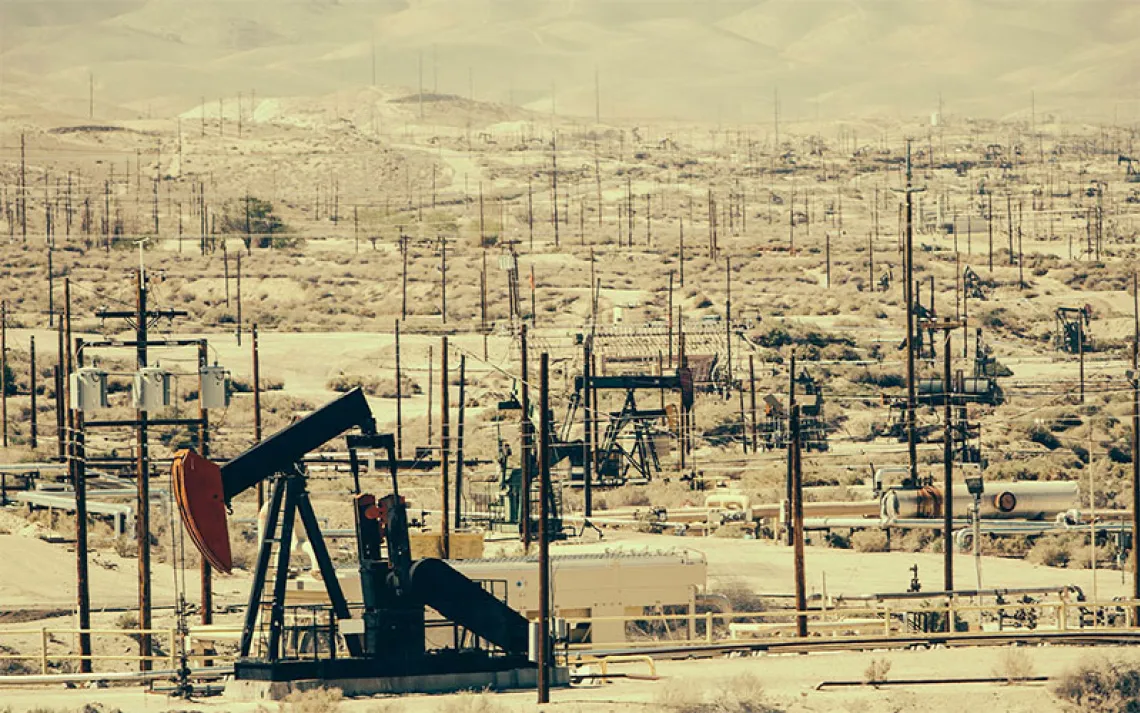Federal Appeals Court Hears Youth Climate Justice Suit
Plaintiff’s attorney says case is this generation’s Brown v Board of Education

Photos by Jason Mark
On Monday morning, a lawyer for the U.S. government, a plaintiff’s attorney, and three judges gathered at the federal courthouse in San Francisco, and all agreed that the Juliana v the United States lawsuit is “unprecedented,” “extraordinary,” and “unusual.” Now, it’s up to the appeals court panel to decide whether the landmark case will ever go to trial.
In 2015, 21 young people, all of them 21 years old or younger at the time, filed a lawsuit contending that the federal government’s failure to take significant action to address global climate change violates young people’s right to due process and equal protection, as guaranteed under the Constitution. The case, spearheaded by a nonprofit public interest law group called Our Children’s Trust, rests on a principle called the “public trust doctrine,” which says that the government has a responsibility to safeguard certain public assets—in this case, as the young plaintiffs are arguing, a stable atmosphere.
To the surprise of many legal observers, including some of those sympathetic to the young people’s claims, a federal magistrate upheld the plaintiff’s legal standing; in 2016, a federal district court judge then denied the federal government’s motion to dismiss the case. Not long after that, several large corporate groups that had backed the government’s position—including the National Association of Manufacturers and the American Petroleum Institute—abandoned their support of the government’s position. Lead plaintiff’s attorney Julia Olson promised that the forthcoming hearing in federal court, originally scheduled for February 2018, would be “the trial of the century.”
But earlier this year, the Trump administration’s Department of Justice filed a petition for what is called a “writ of mandamus.” That’s a rarely used procedural maneuver that essentially allows a case to leapfrog over the usual legal venues and to be considered by an appeals court that can, if it wishes, prevent a lower court from even hearing the case.
This morning’s hearing in front of the Ninth Circuit Court of Appeals was to consider that single procedural matter: whether the young plaintiffs should have a chance to present their evidence and to argue the merits of their case during a trial in federal court.
Deputy Assistant Attorney General Eric Grant opened the hearing by arguing that the sweep and ambition of the youths’ lawsuit, and its potential for creating a conflict between the judicial and the executive branches of government, is grounds enough to toss the case. “Echoing the Supreme Court, this court has said that the remedy of mandamus is a drastic and extraordinary remedy reserved only for truly extraordinary cases—this is such a case,” Grant said. “It is really extraordinary because plaintiffs seek unprecedented standing to pursue unprecedented claims in pursuit of an unprecedented remedy. According to [the] plaintiffs’ complaint, virtually every single inhabitant of the United States has standing to sue virtually the entire executive branch to enforce an unenumerated constitutional right to a climate system capable of sustaining human life.”

Sign up to receive Sierra News & Views
Get articles like this one sent directly to your inbox weekly.
With this action you affirm you want to receive Sierra Club communications and may vote on policy designated by the Sierra Club Board.
The deputy assistant attorney general didn’t get much farther than that before the appellate judges interrupted him as they questioned the government’s claims. During the course of 50 minutes of arguments, the three-judge panel—Chief Judge Sidney Thomas and Circuit Judges Alex Kozinski and Marsha Berzon—expressed a great deal of skepticism toward the government’s position.
Judge Berzon quickly knocked back the government’s worries that the case could set up a constitutional confrontation should a district court demand an overhaul in the nation’s fossil fuel policies. “Why should the ordinary processes of litigation not be followed?” she asked. “It’s a presage. Nothing’s happened yet.”
Chief Judge Thomas was skeptical of the government’s claims that the case, if tried, would be especially burdensome: “How is this different from an anti-trust case, or a securities case, or an ordinary products liability case? What you’ve described is what happens in courts all the time.”
The three judges appeared especially worried that, should they allow the federal government’s petition for a writ of mandamus, it would establish a precedent that would soon lead to a wave of similar petitions from other defendants who didn’t like the rulings of lower courts. “If we grant the motion here, why don’t we grant it to the next person who comes here and says the same thing?” Judge Berzon wondered.
“We would be absolutely flooded with appeals from people who think that their case should have been dismissed by the district court,” Chief Judge Thomas said. “I mean, if we set the precedent on this kind of case, there’s no logical boundary to it.”
When it came time for attorney Julia Olson of Our Children’s Trust to present her arguments for why the youth plaintiffs should have their day in court, the judges were also sharp in their questioning. Each of them expressed some form of reservation about the young people’s claims to a constitutional right to a stable atmosphere, a claim that Judge Berzon referred to as “all a big mush.”
“There’s no Supreme Court case addressing substantive due process to a particular climate, that I’m aware of,” Judge Kozinski said at one point. “I am not aware of any case that says the government is required to regulate so as to avoid harms caused by others.”
Judge Kozinski also appeared unconvinced by the young people’s arguments that they will suffer disproportionately from the effects of climate change. “Whatever harm they are suffering is the same as everyone else in the country,” he said.
To which attorney Olson had a pointed rebuttal: “Your honor, they will live far longer than you,” she said, to muffled chuckles from some of the plaintiffs who were in the courtroom. “They will live to late in the century, to when seas are projected, by these federal defendants, to be 10 feet higher.”

After the hearing, the plaintiffs and their attorneys left the imposing San Francisco federal courthouse and were greeted by more than 100 people who had shown up to demonstrate their support. During a rally, the young plaintiffs and their attorneys expressed optimism that the appeals court will deny the government’s petition and allow their case to go to trial. The appellate judges will likely issue a ruling in the case in early 2018.
Levi Draheim, a 10-year-old from one of Florida’s barrier islands, told the crowd that he is already being harmed by the effects of global climate change and that his neighborhood was badly flooded during Hurricane Irma. “If we don’t stop climate change, I might not have a home when I’m older,” Draheim said. “That’s why we need this case to go to trial.”
As she had in court, Olson drew a parallel between the Our Children’s Trust lawsuit and earlier U.S. court cases that succeeded in establishing new legal precedent and confirming long-standing rights. “We’re hoping that we’ll be in trial this spring, where we will prove that the government has, for decades, caused systemic infringement on young people’s rights, systemic discrimination,” she told the cheering crowd. “This is this generation’s Brown v Board of Education.”
 The Magazine of The Sierra Club
The Magazine of The Sierra Club



